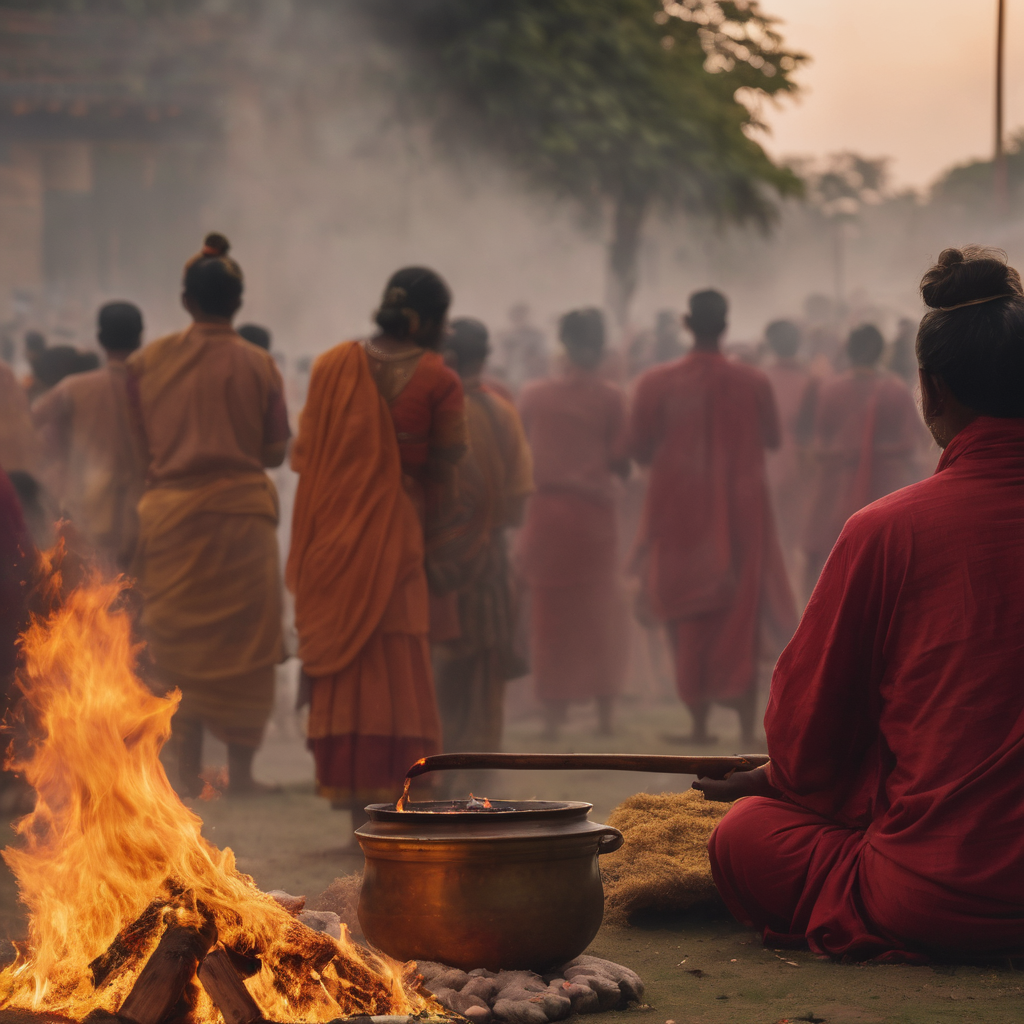The Yagna, a profession of faith in the Vedic tradition, spans much more than just the ritual practice. It personifies a sacred validation of divinity, which is not only carried by the beliefs of the worshippers who do it relentlessly, but also most times without realizing its enormous significance.
Agni, the Hindu god of fire and the messenger of the gods, plays an important role in yagna. Combustible materials like wood, cow dung, and ghee give life to the sacred fire that nourishes all beings, while various havana samagri including milk, rice, grains, and fruits are offered to the flames. Agni is worshipped as the medium through which these offerings are channeled from worshippers to Travas, representing the mechanism of deity communication.
Lord Krishna elucidates twelve types of yagnas in the Bhagavad Gita: Deva, Brahma, Indriya, Mano, Atma-samyama, Dravya, Tapo, Yoga, Swadhyaya, Jnana, Prana, and Deha yagna; each embodying unique spiritual significance and purpose.
Yagnas, is the domain of Brahmins priests who, following some rigorous training, chant Sanskrit mantras and lead devotees in presenting offerings to the sacred pyre. This offering that gets burnt signifies the renunciation of one’s ego and wants, conveyed to fire as a sacrosanct contribution. In exchange for these offerings the devas bestow their blessings and boons to the participants. The implication is that the participants receive the grace of the Gods in return for their prayers.
Immediately after the yagna is over, we anoint the seven chakras with vibhuti or the remnant considered as a token of spiritual cleansing and growth. This holy ash is most often applied at the forehead (agna chakra), neck (vishuddhi chakra), and chest (anahata chakra), which is based on the beliefs that it will cleanse and realign the body’s energy centers.
Apart from the religious connotation, this ritual is assumed to eliminate impurity in the air and soul, leading to many perform the rituals in their apartments. The yagna in all its shades caters to the diversified requirements, starting from Rajasuya yagna for the privileged king’s ceremony, to Ashvamedha yagna for territorial expansion or Putrakameshti yagna for offspring.
The holy texts that state that Raja Harishchandra, Lord Ram, Dharmaraja and Yudhishtira did the Rajasuya yagna while the Putrakameshti yagna is performed, Rishyasringa with Dasharatha, where the event begins with Agnidev appears himself and giving Prasadam which is sweet kheer to king Dasharatha “Who then presented it to his three queens to eat — Kaushalya, Sumitra and Kaikeyi, in hope of conceiving new sons born to be Sri Ram, Lakshman, Bharat and Shatrughna.”
Yagna is a ceremonial ritual and its practice involves several connotative meanings. It is the subject of many stories in the Hindu scriptures and has been taking place since the past for centuries. The survival of this festival for centuries stands as a clear representation of the Hindu people’s determination and might.

